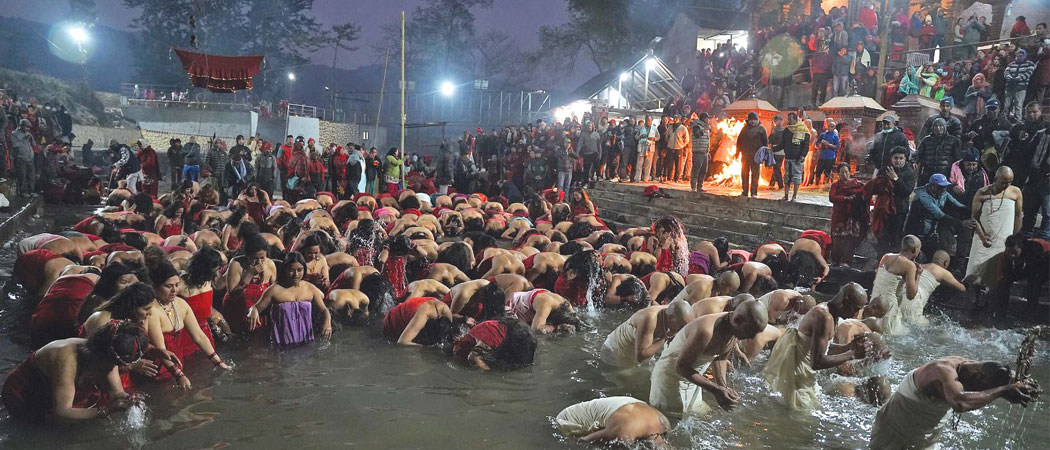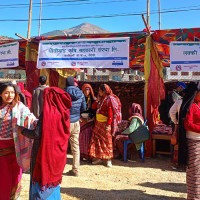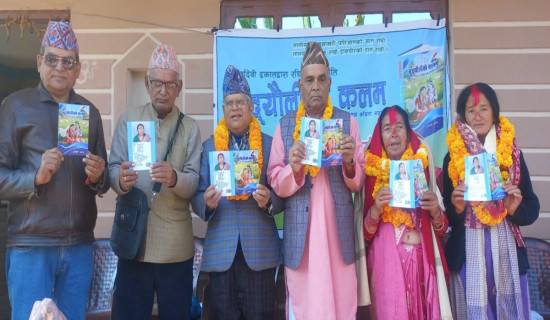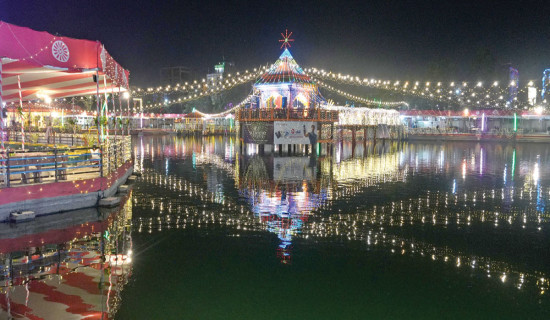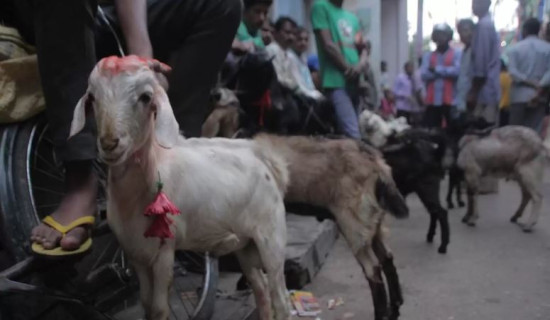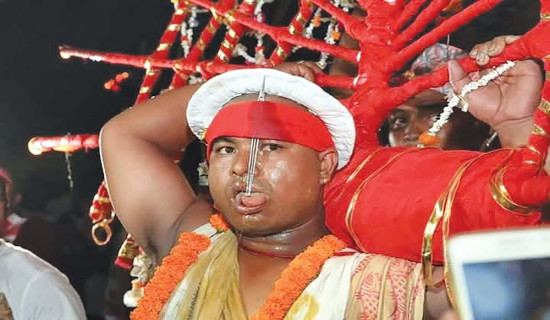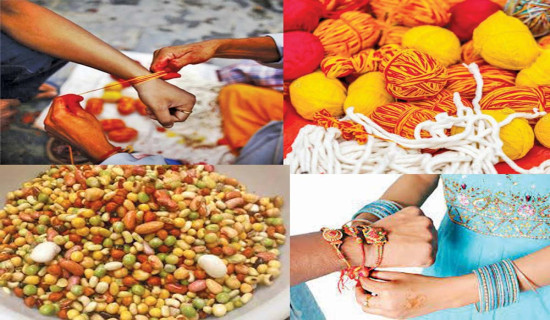- Tuesday, 16 December 2025
Swasthani fasting begins
Kathmandu, Jan. 7: Lord Kumar dictates: Oh, sage Agastya …This phrase shall once again be heard in houses of the faithful across the Kathmandu Valley and beyond as the Swasthani fast has begun.
The month-long religious observation, marked by abstention from food and recitation of the Swasthani holy story, began on the full moon day of the Nepali month of Poush. And to celebrate it with full devotion, over a hundred men and women have gathered on the banks of the sacred Sali River in the conch-shaped town of Sankhu, 20 kilometres north-east of the capital Kathmandu, this year.
The river holds great significance for adherents of the Swasthani cult because it is also described in the aforementioned Swasthani story itself as a special body of water that is associated with the gods and has healing power. That is why hundreds arrive here from all over the country during the fasting month to take a bath.
Among the 18 Hindu Purans, the story of Shree Swasthani Parmeshwori is related to the Skanda Puran and revolves around the female characters of Goma and Chandrawati who both find wealth and prosperity after worshipping the Parmeshwori and observing the fast. One can still see a large rock in the middle of the Sali River which represents Chandrawati. Those visiting Sankhu can also see the hut that Goma used to live in.
Chandrawati is said to have become a leper and suffered a lot after insulting Swasthani who also then cured her and made her queen. Her mother-in-law Goma is portrayed as a virtuous woman who showed unquestioning faith towards Goddess Swasthani and was able to make her son and Chandrawati’s husband Navaraj the king of Lavanya (Sankhu).
The story of Goddess Swasthani may have originally been written in Nepal Bhasa, going by a hand-written manuscript dating back to 1572 AD preserved in the National Archives. This document suggests that the people worshipping Swasthani initially only needed to fast for two days.
Records describing a 30-day fasting ritual only appear after 1602 AD. This original story also does not mention the river Sali. It began to be linked with the goddess only around 200 years ago.

In its inception, Swasthani was a tale told among the indigenous Newa community of the Kathmandu Valley. However, following the conquest of the valley and the unification of the country by King Prithvi Narayan Shah, the glory of Shree Swasthani spread across the country. It has not spread outside Nepal’s borders though and is not found in Hindu communities outside of the nation.
This year, a total 190 women and 25 men have registered to date to fast at the Sali River during the Swasthani festival, according to Mijendra Kaji Shrestha, chairman of the Shree Madhav Narayan Swasthani Fasting and Sali River Management Committee. But, this number can rise as one can join the fasting until three days after the full moon.
People of all ages and backgrounds fast in the name of Shree Swasthani because doing so is believed to bring prosperity and happiness.
Those keeping the fast need to follow strict rules. They can only eat one meal a day that must be without salt, can only walk barefoot and cannot put on any cosmetic items, said Prakash Man Shrestha, a culture expert of Sankhu. They must also take a dip in the Sali River every morning and visit different shrines for worship, he added.
On the day of Saptami, male devotees cannot even walk and must instead lie down and roll across the settlements of Sankhu, mentioned in the Swasthani story as the country of Lavanya, while wearing nothing but loin cloths.
“They are required to live on a diet containing only rice, carrot, beans, ginger, ghee, chaku (hardened molasses), sugar, beaten rice and milk. On the day of the Ekadasi, they can eat banana, yam, sugarcane and oranges,” expert Shrestha informed.

